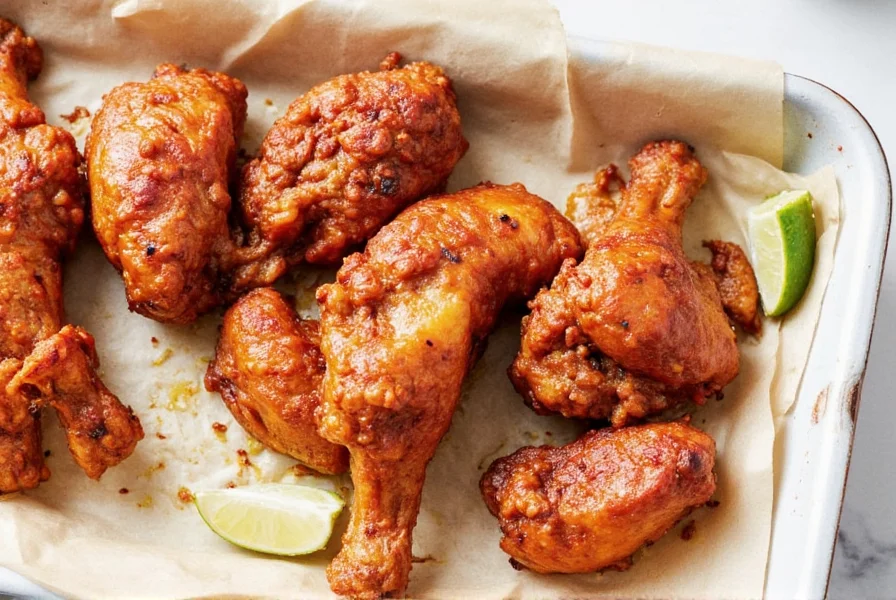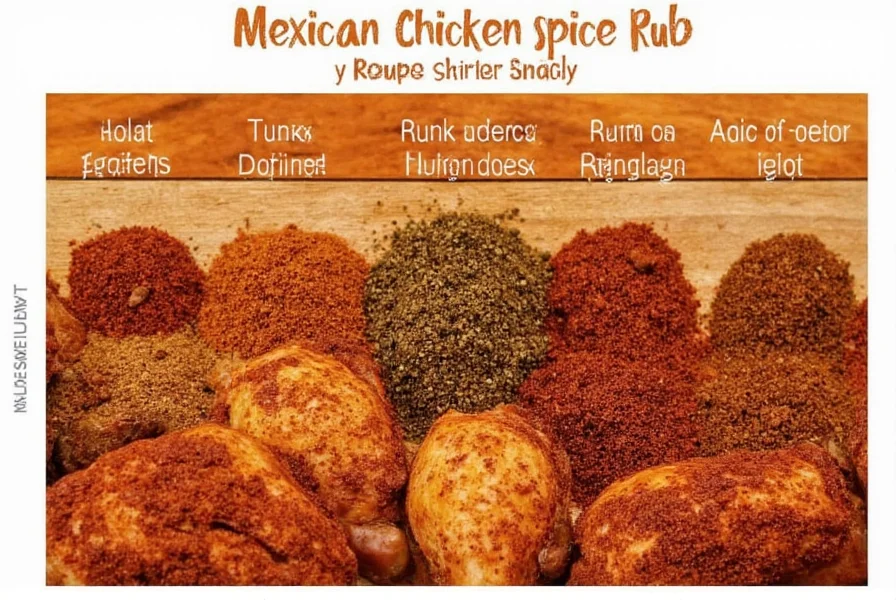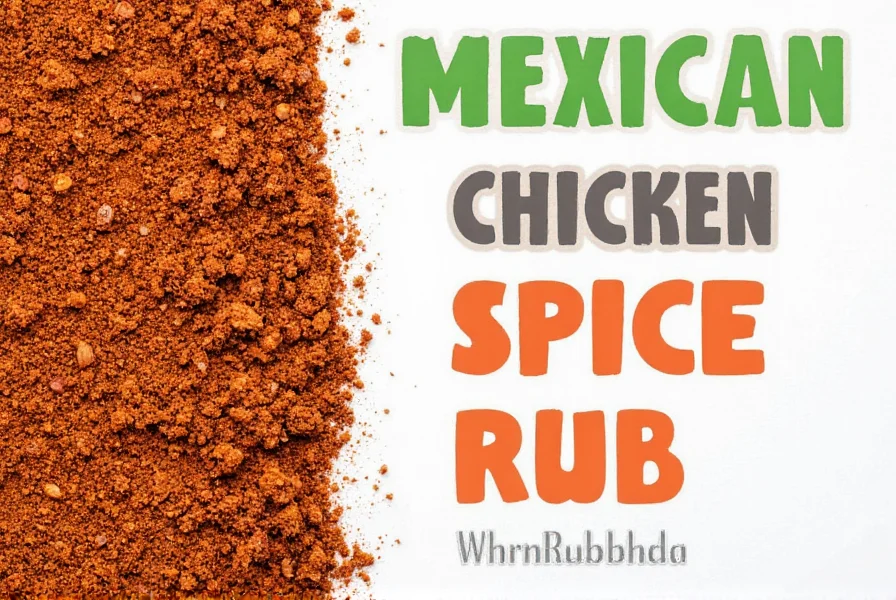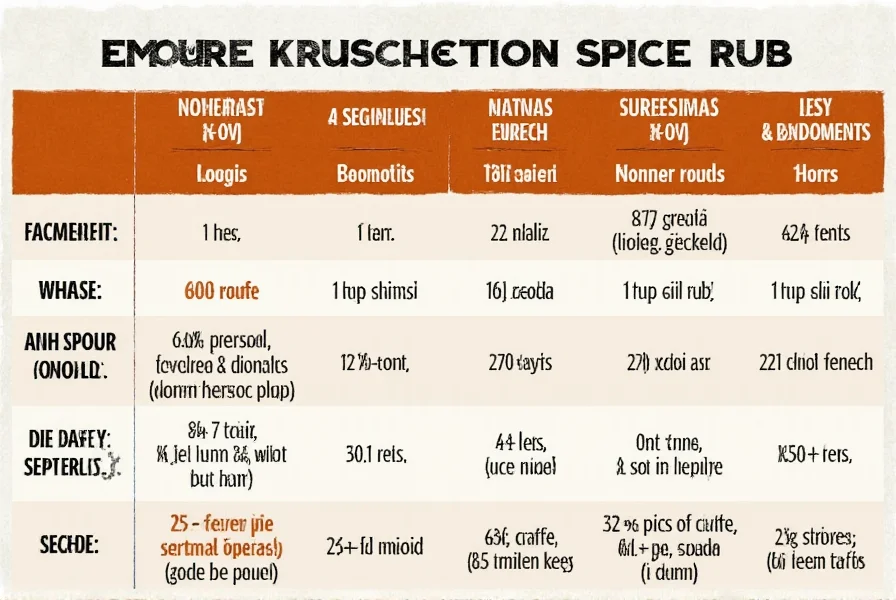5 Spicy Secrets to Mastering the Ultimate Mexican Chicken Spice Rub
If you're craving bold, zesty flavor with every bite of chicken, it's time to embrace the magic of a Mexican chicken spice rub. Whether you're grilling up for a weekend fiesta or prepping weeknight dinners, this versatile blend of spices is your ticket to mouthwatering meals. In this article, we'll explore everything from ingredient essentials to professional tips and even compare top-rated spice rubs so you can find your perfect match.
Table of Contents
- Why You Need a Mexican Chicken Spice Rub in Your Life
- The Core Ingredients: What Makes a Mexican Chicken Rub So Unique?
- Top 5 Tips for Applying the Perfect Chicken Rub
- Rub Showdown: Top 5 Mexican-Style Chicken Rub Brands Compared
- Buying Guide: How to Choose the Right Chicken Spice Rub for You
- Homemade vs Store-Bought: Which Is Better?
- Beyond Chicken: Creative Ways to Use Your Mexican Rub
- Final Thoughts on Elevating Your Grilled Game
Why You Need a Mexican Chicken Spice Rub in Your Life
Mexican cuisine has long been celebrated for its vibrant flavors, rich history, and ability to turn simple ingredients into unforgettable dishes. A well-balanced chicken spice rub brings together heat, earthiness, citrus, and umami — all the signature notes that define Mexican street food and home cooking.

Whether you're making tacos, enchiladas, or just savoring juicy grilled chicken, a quality rub can elevate your dish without the need for complex marinades or hours of prep. It’s fast, flavorful, and incredibly flexible — perfect for both seasoned chefs and backyard grillers alike.
The Core Ingredients: What Makes a Mexican Chicken Rub So Unique?
At its heart, a Mexican-style chicken rub combines warm spices, chiles, and aromatic herbs. Here's what you’ll typically find:
- Chili Powder – Adds depth and mild to medium heat
- Cumin – Earthy, nutty base note
- Garlic Powder – Adds savory kick
- Onion Powder – Boosts natural sweetness
- Oregano (Mexican preferred) – Herbal brightness
- Paprika – Sweetness and color
- Lime Zest – Brightens the whole blend
- Salt & Pepper – Balances and enhances
Some blends also include smoked paprika, chipotle powder, or dried citrus peel for extra complexity.
Top 5 Tips for Applying the Perfect Chicken Rub
- Dry the Chicken First: Pat the chicken dry with paper towels before applying the rub to help it stick better and create a nice crust.
- Rub Generously: Don’t be shy — coat each piece evenly on all sides.
- Let It Rest: Allow the chicken to sit with the rub for at least 30 minutes (or overnight) to absorb the flavors.
- Use Hands or Brush: For best coverage, use your hands or a pastry brush to work the rub into the skin.
- Don't Overdo Salt: If using a store-bought rub, check sodium content before adding more salt.
Rub Showdown: Top 5 Mexican-Style Chicken Rub Brands Compared
There are countless options on the market, but not all rubs are created equal. Here's how five popular brands stack up:
| Brand | Flavor Profile | Key Ingredients | Heat Level | Best Use |
|---|---|---|---|---|
| Burman's Fire | Smoky + Citrus | Chipotle, lime zest, garlic | Medium-High | Grilled tacos, street corn chicken |
| Spicewalla Smoked Chicken Rub | Earthy + Warm | Smoked paprika, cumin, coriander | Low-Medium | Pulled chicken sandwiches |
| Badia Adobo con Chile | Savory + Tangy | Annatto, vinegar, garlic | Medium | Kebabs, oven-roasted thighs |
| Williams Sonoma Taco Rub | Bright + Herbaceous | Mexican oregano, orange zest, chili | Low | Fajitas, nachos, quesadillas |
| Mrs. Dash Fiesta Lime | Zesty + Fresh | Lime, cilantro, onion | Very Low | Weeknight chicken bowls |

Buying Guide: How to Choose the Right Chicken Spice Rub for You
Choosing the perfect rub depends on your taste preferences, cooking method, and occasion. Here's a breakdown to help you decide:
- Flavor Preference: Are you leaning smoky, spicy, sweet, or citrus-forward?
- Cooking Method: Will you grill, roast, slow cook, or pan-sear? Some rubs stand up better to high heat than others.
- Time Available: If you want instant flavor, store-bought works. For deeper customization, try homemade.
- Dietary Needs: Check labels for additives, salt content, and allergens if necessary.
- Budget: Homemade rubs can cost as little as $2 per batch, while premium blends may run over $10 per jar.

Homemade vs Store-Bought: Which Is Better?
Both have their merits! Let’s break down the pros and cons:
| Homemade Rubs | Store-Bought Rubs | |
|---|---|---|
| Pros | Customizable, fresher ingredients, budget-friendly | Convenient, consistent flavor, no prep needed |
| Cons | Takes time to mix, requires storage space | Can be overly salty or contain preservatives |
| Best For | Chef-level control and experimentation | Quick meals, outdoor adventures, beginners |
Beyond Chicken: Creative Ways to Use Your Mexican Rub
Don’t limit your rub to just poultry! Try these unexpected uses:
- Shrimp Tacos: Sprinkle on peeled shrimp before grilling.
- Roasted Vegetables: Toss with rub before roasting for smoky-savory bites.
- Egg Dishes: Add a pinch to scrambled eggs or huevos rancheros.
- Corn on the Cob: Mix with butter for an irresistible elote topping.
- Popcorn Seasoning: Blend with nutritional yeast for a spicy movie night snack.

Final Thoughts on Elevating Your Grilled Game
A Mexican-style chicken spice rub is more than just seasoning — it’s a flavor passport to sunny markets, bustling street carts, and soulful family kitchens. With the right blend, you can transform basic chicken into a culinary celebration.
So whether you go DIY or opt for a ready-made rub, don’t underestimate the power of a few well-chosen spices. Experiment, taste boldly, and most importantly — enjoy every bite!












 浙公网安备
33010002000092号
浙公网安备
33010002000092号 浙B2-20120091-4
浙B2-20120091-4